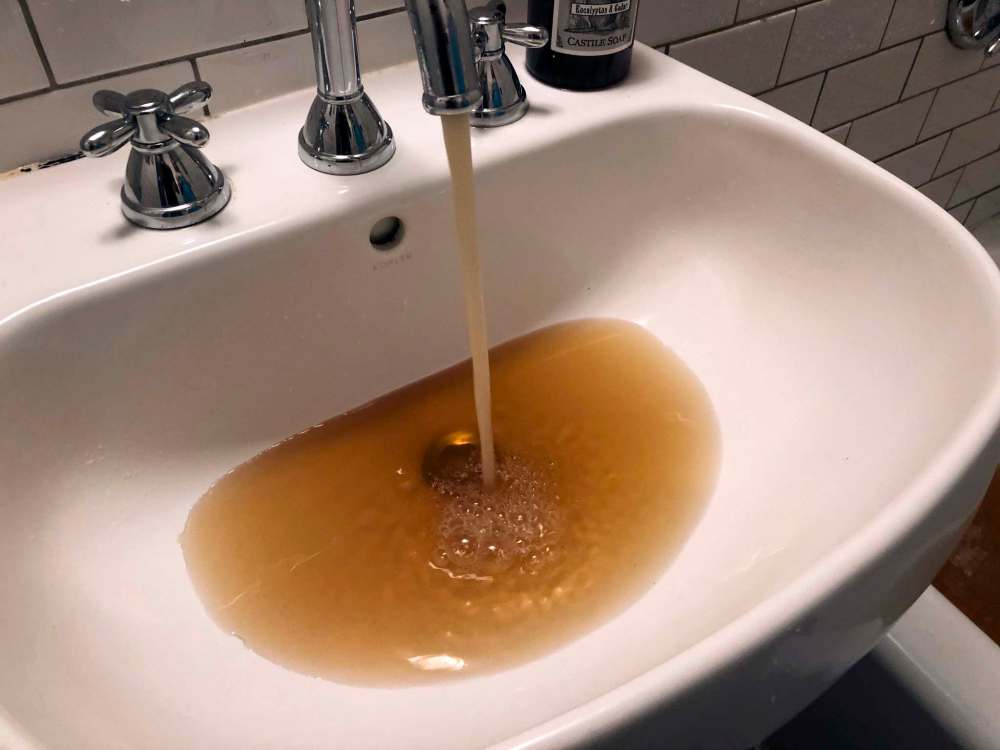City finds solution for brown tap water
Advertisement
Read this article for free:
or
Already have an account? Log in here »
To continue reading, please subscribe:
Monthly Digital Subscription
$0 for the first 4 weeks*
- Enjoy unlimited reading on winnipegfreepress.com
- Read the E-Edition, our digital replica newspaper
- Access News Break, our award-winning app
- Play interactive puzzles
*No charge for 4 weeks then price increases to the regular rate of $19.00 plus GST every four weeks. Offer available to new and qualified returning subscribers only. Cancel any time.
Monthly Digital Subscription
$4.75/week*
- Enjoy unlimited reading on winnipegfreepress.com
- Read the E-Edition, our digital replica newspaper
- Access News Break, our award-winning app
- Play interactive puzzles
*Billed as $19 plus GST every four weeks. Cancel any time.
To continue reading, please subscribe:
Add Free Press access to your Brandon Sun subscription for only an additional
$1 for the first 4 weeks*
*Your next subscription payment will increase by $1.00 and you will be charged $16.99 plus GST for four weeks. After four weeks, your payment will increase to $23.99 plus GST every four weeks.
Read unlimited articles for free today:
or
Already have an account? Log in here »
Hey there, time traveller!
This article was published 16/11/2018 (2547 days ago), so information in it may no longer be current.
City officials believe they finally have a fix for the brown tap water problem, which surfaces periodically.
The water and waste department said Friday it would replace a water treatment additive that has been identified as the cause of the problem.
“We expect discoloured-water events to decline in 2019 compared to previous years,” Tim Shanks, manager of water services, said in a statement.

“However, it is difficult to predict how long it will take to see a major reduction.”
The number of incidents of brown water pouring out of household taps skyrocketed in 2012 and 2013, even though the city’s water treatment facilities at the Deacon Reservoir had undergone an extensive, multimillion-dollar expansion and upgrade in 2009.
A consultant’s report in 2013 concluded the brown-water problem was caused by an increased presence of manganese as a result of the use of ferric chloride, a coagulant added to the water to bind particles together, making it easier to remove them.
The larger chunks would often stick to the inside of water lines but come loose whenever there was work done on the lines, changing the water flow. The result was seemingly random discharges into homes.
The consultant recommended finding an alternative coagulant and taking steps such as a complete flushing of the city’s underground water lines.
An administrative report to the Nov. 22 environment committee meeting states the steps taken to date have resulted in a 46 per cent decrease in the number of reported discoloured-water incidents in 2014, but the problem continued to dog the system.
The final step required the design and construction of a pilot treatment area inside the water treatment plant, where alternative coagulant materials could be tested.
The report says ferric sulphate proved to be an acceptable alternative and was then subjected to further testing over the next year before water and waste officials signed off on the switch.
Shanks said the water and waste department will switch to ferric sulphate by the end of year, but it’s not known how long it will take before manganese levels begin to drop.
“When the switch to the new coagulant is complete, manganese levels in the distribution system are expected to decrease,” the report states.
“Once the distribution system adjusts to the change in the water chemistry from the new coagulant, it is expected there will be a return to pre-2009 frequency of discoloured water reports.”
The city reminds residents who continue to experience discoloured water to report incidents to 311.
aldo.santin@freepress.mb.ca
History
Updated on Friday, November 16, 2018 11:55 AM CST: Adds photo
Updated on Friday, November 16, 2018 2:29 PM CST: Corrects reference to ferric chloride.
Updated on Saturday, November 17, 2018 8:28 AM CST: Final


